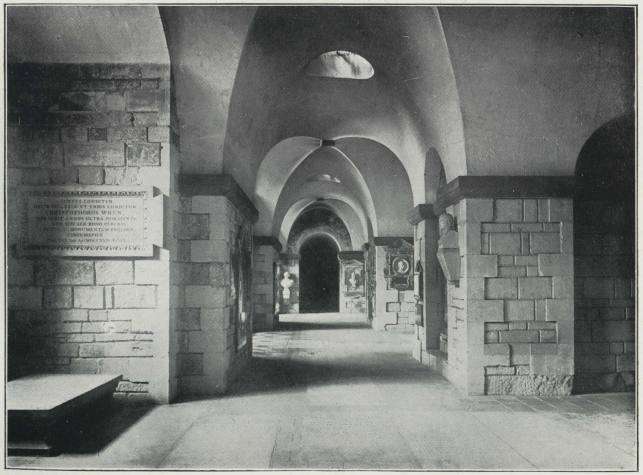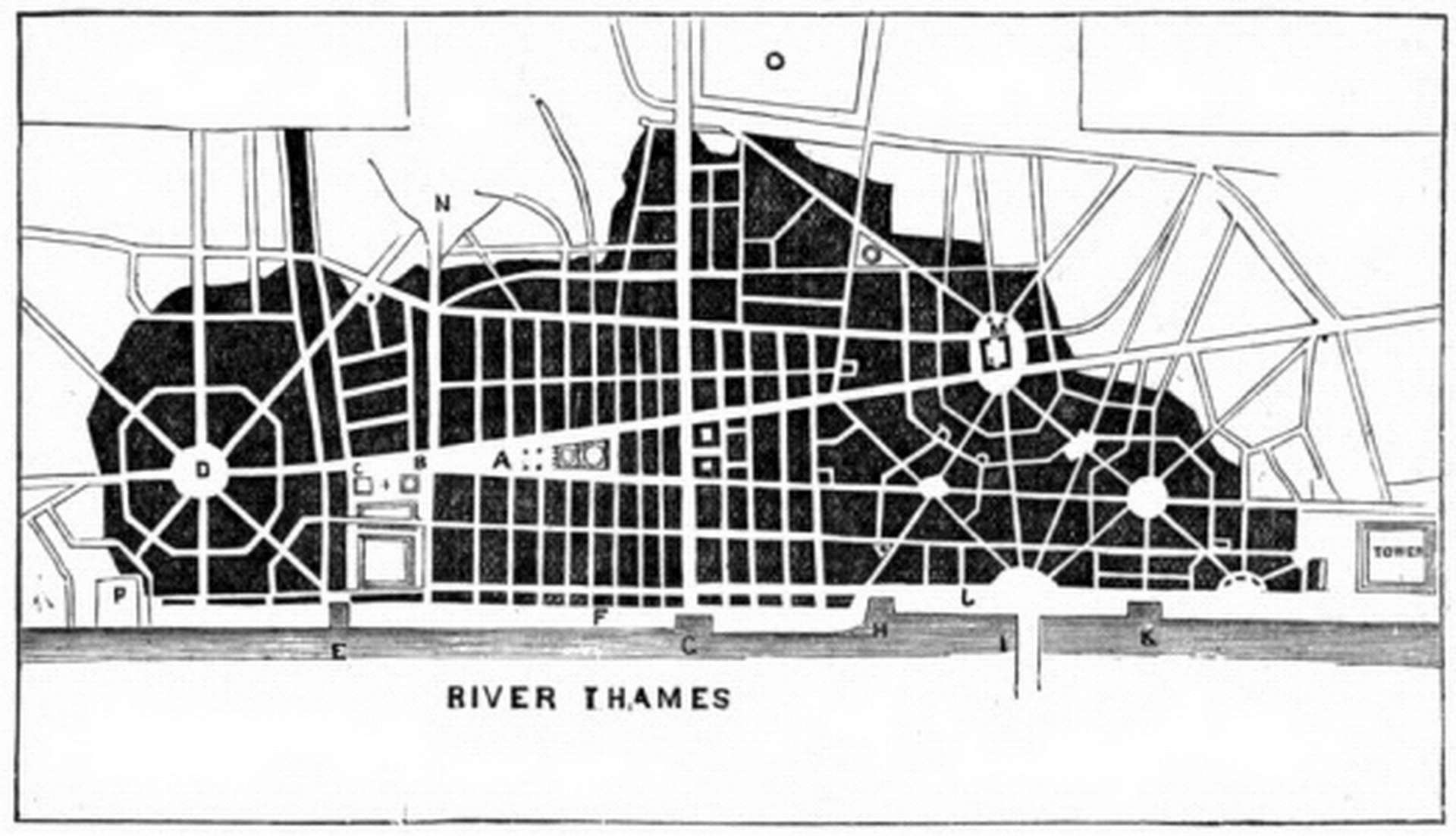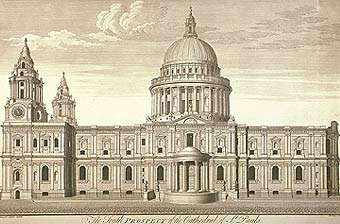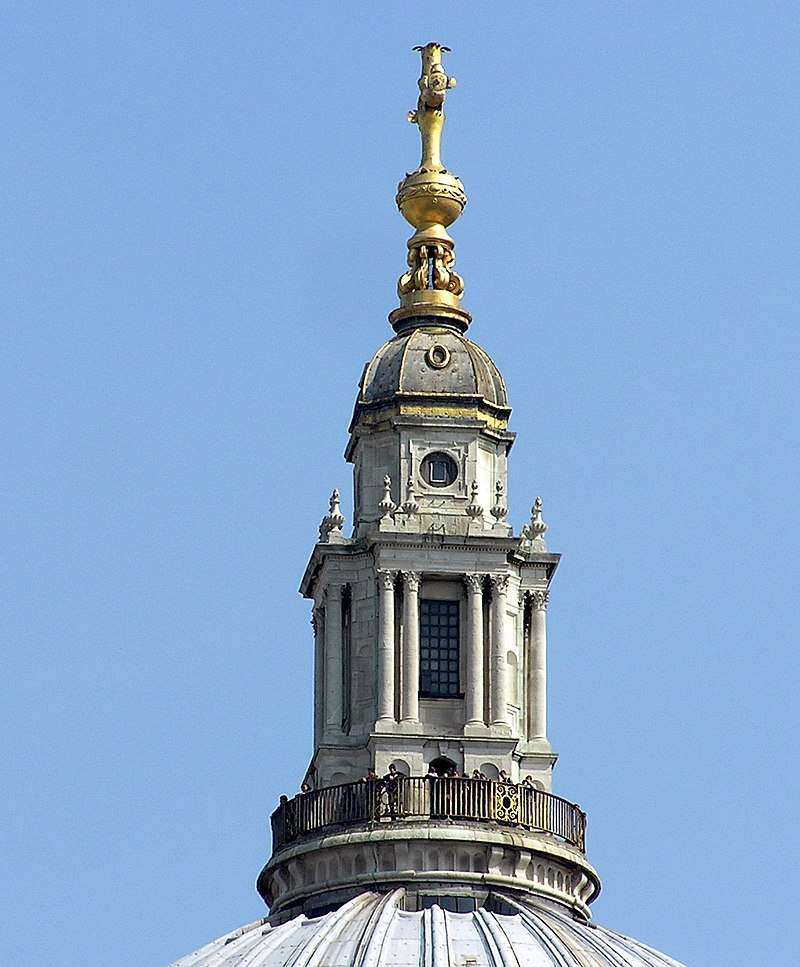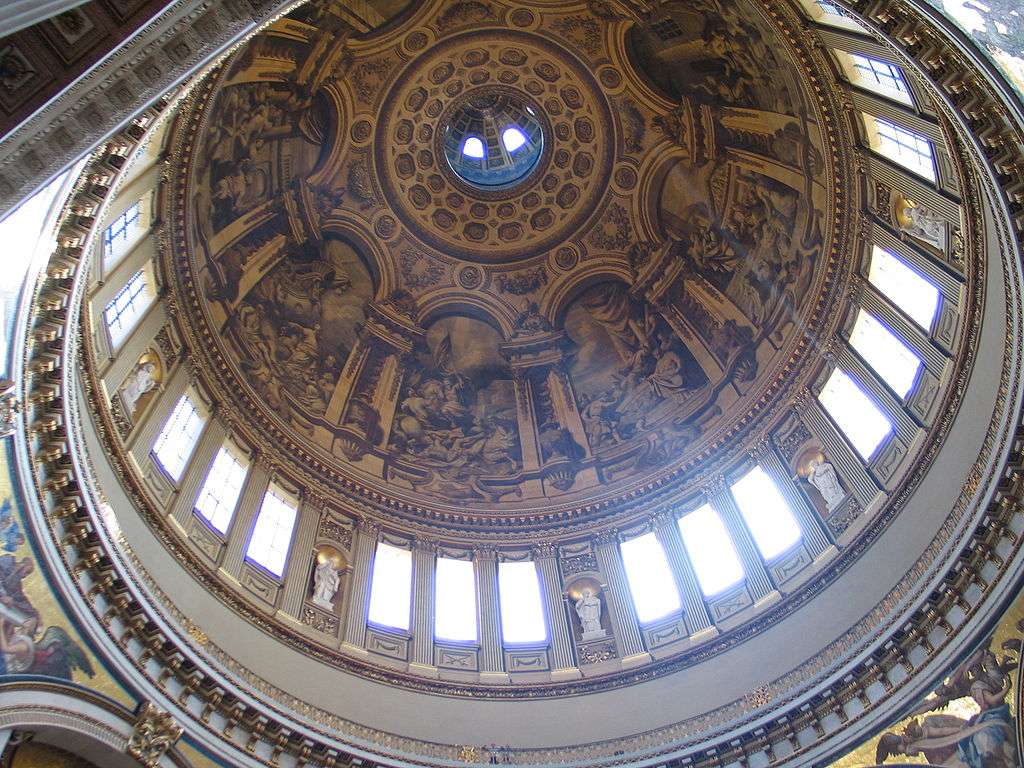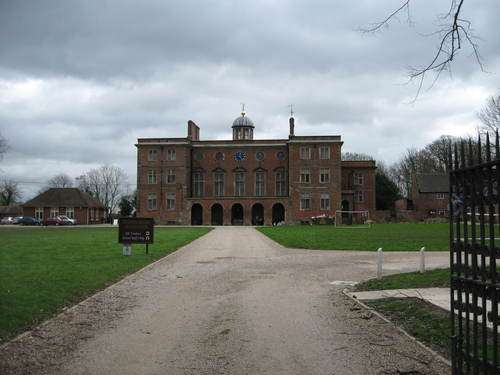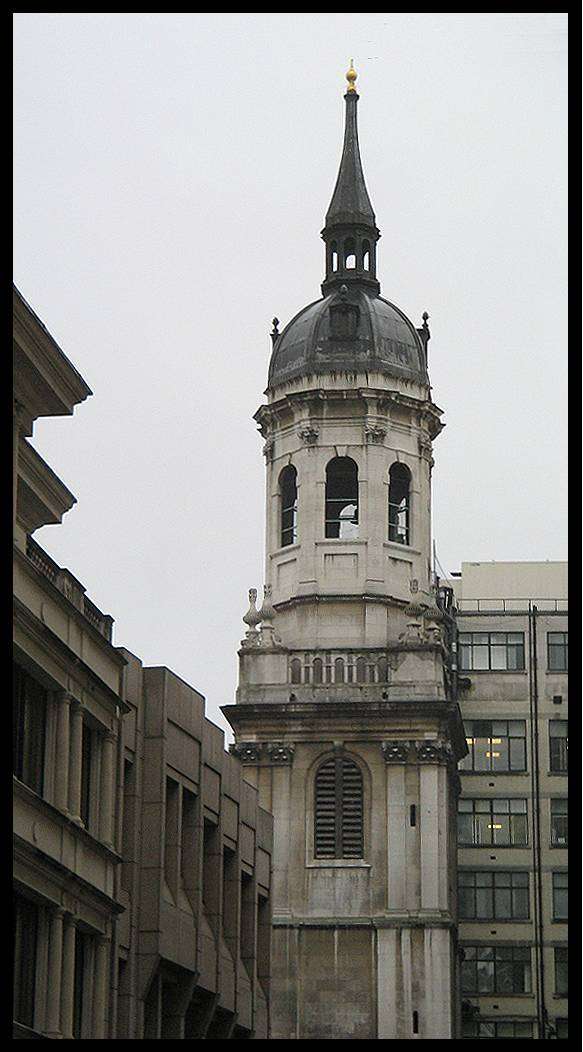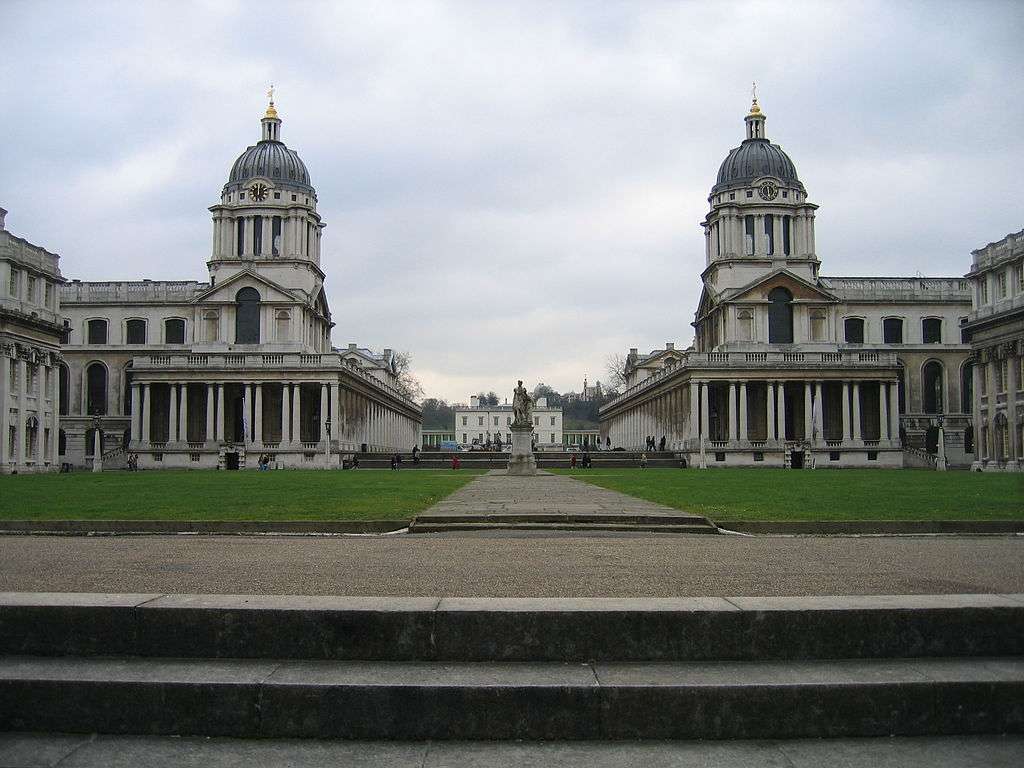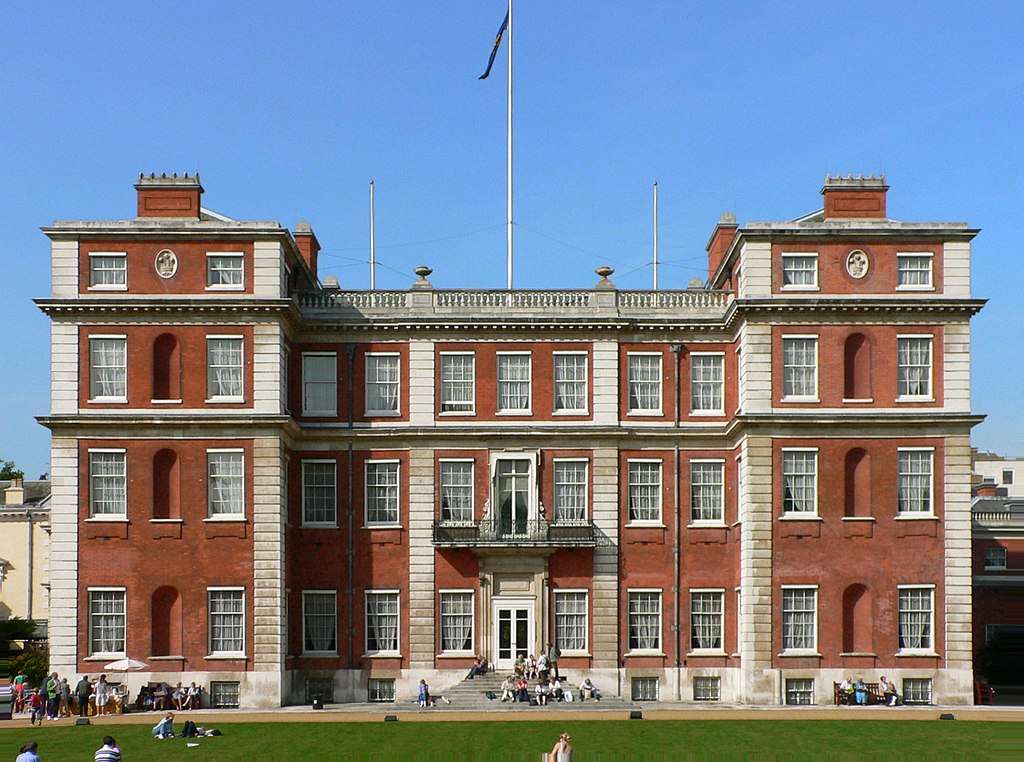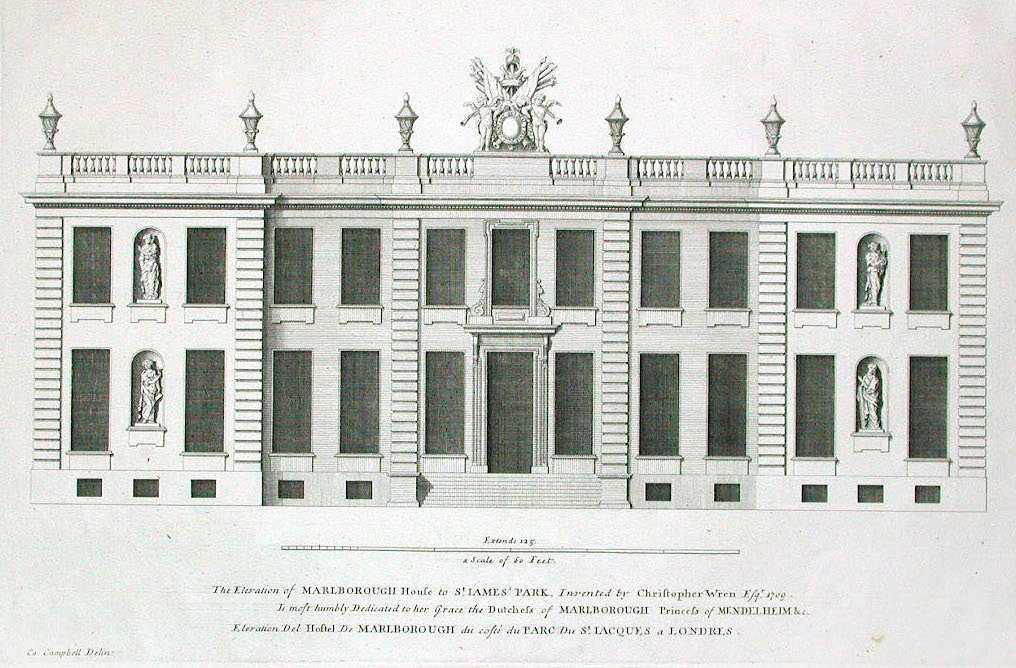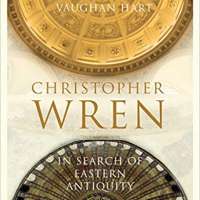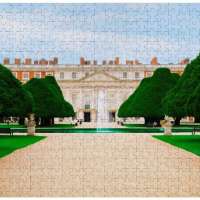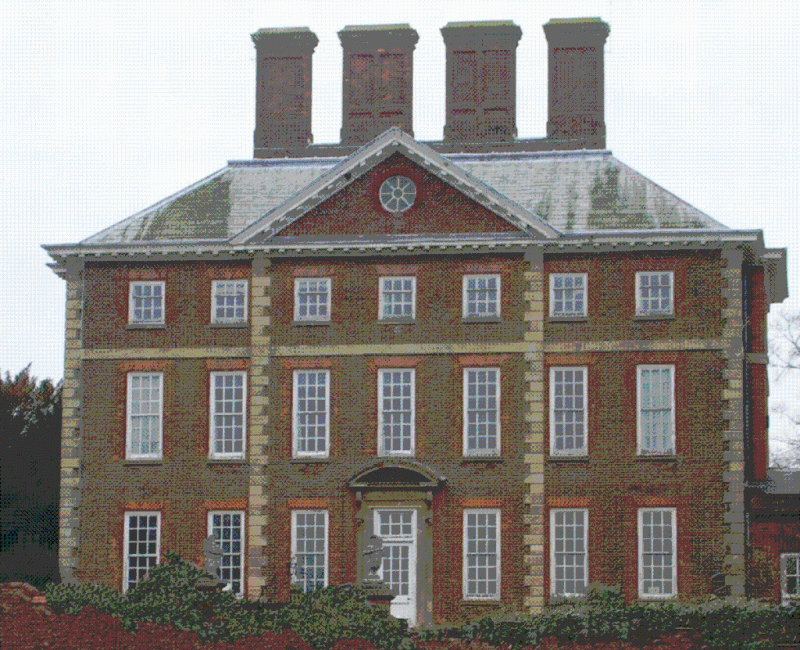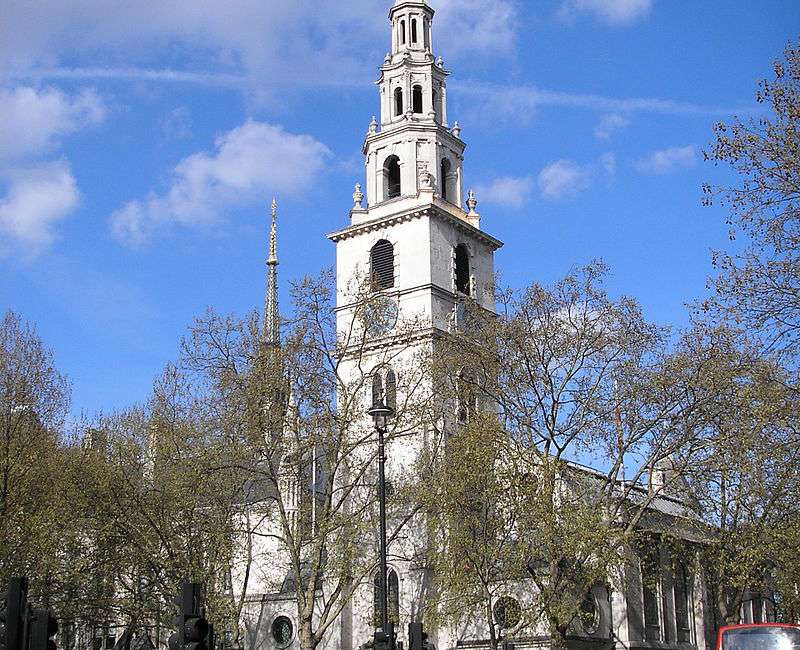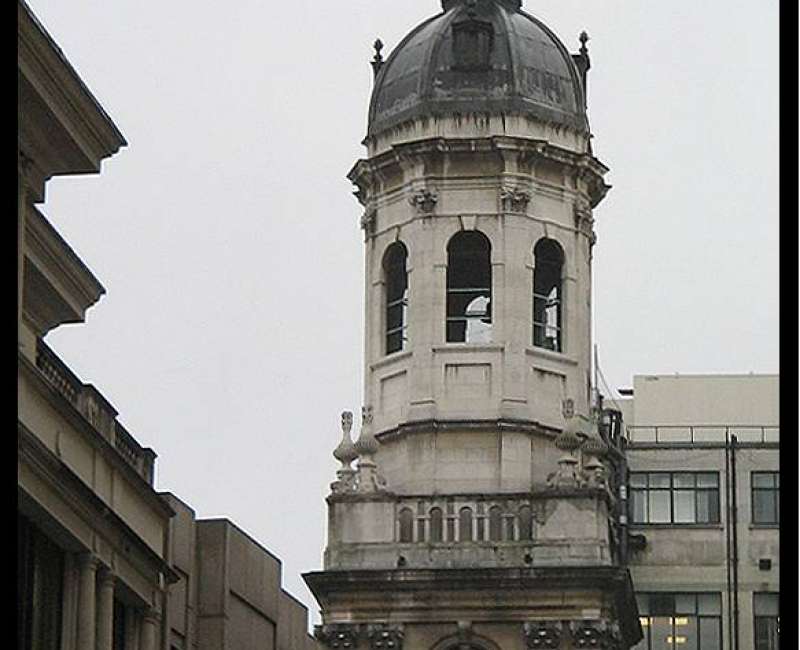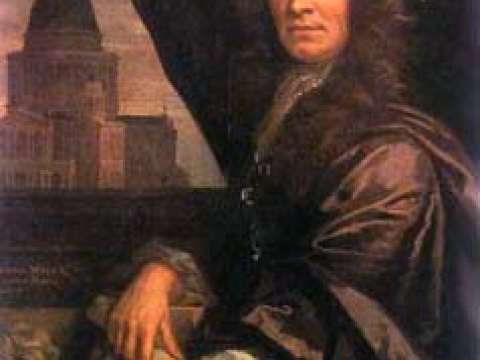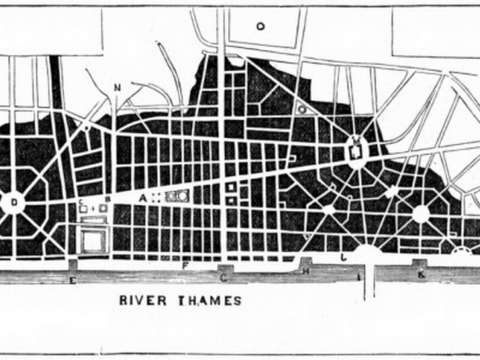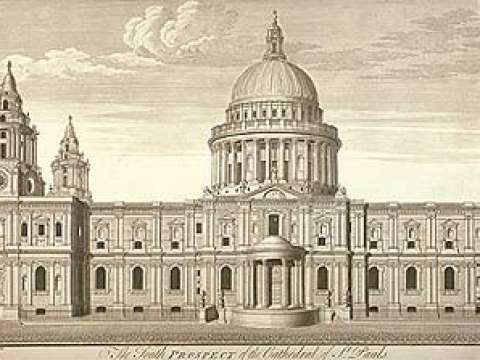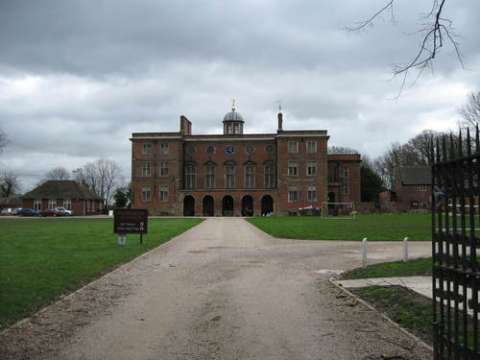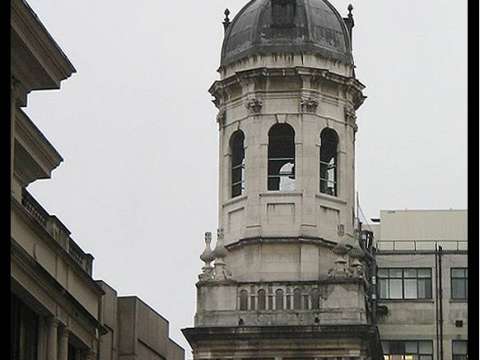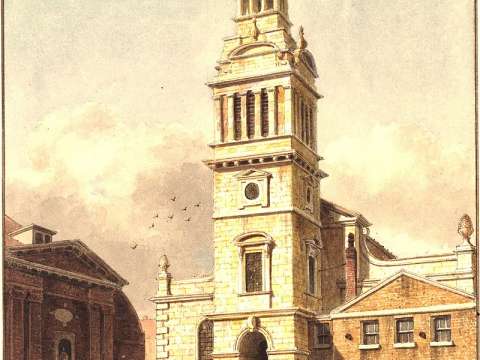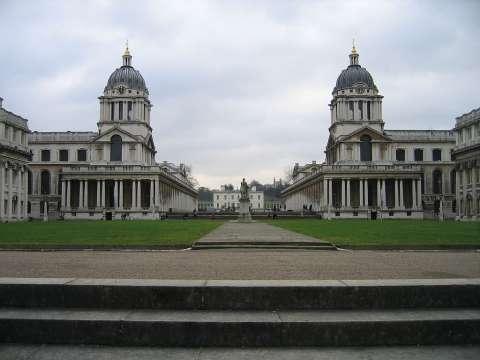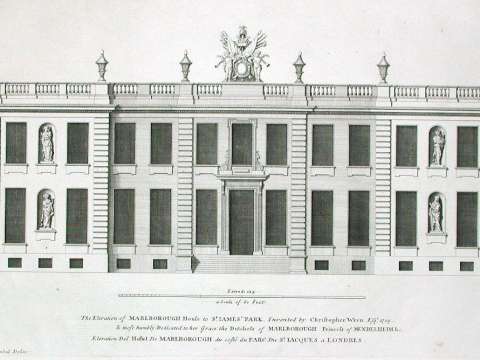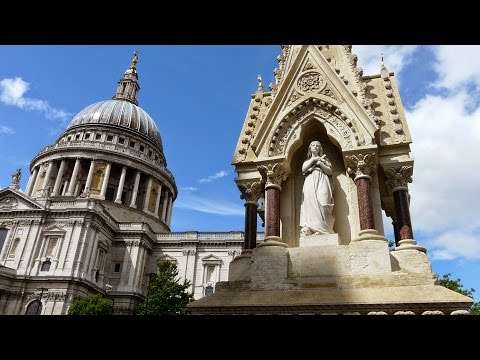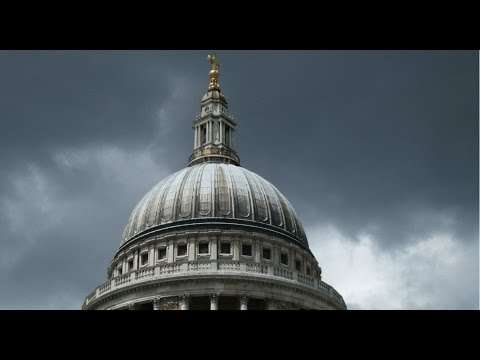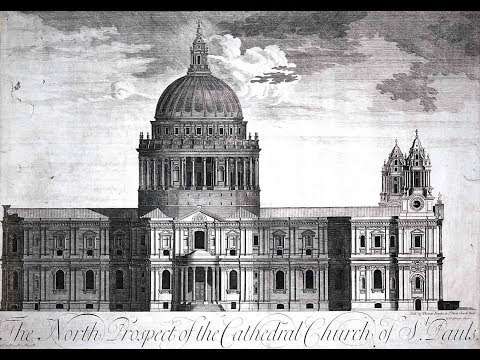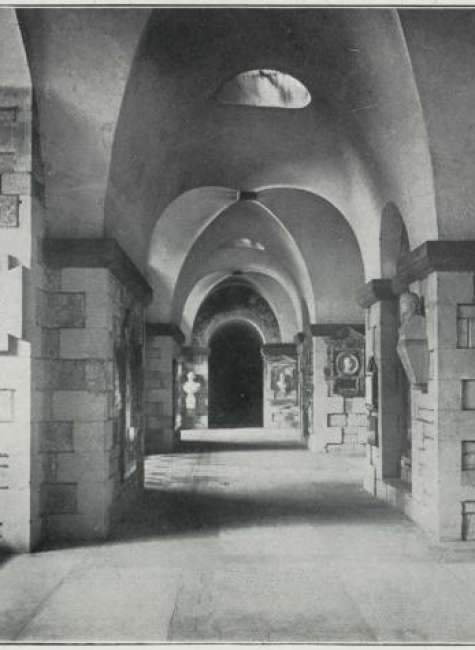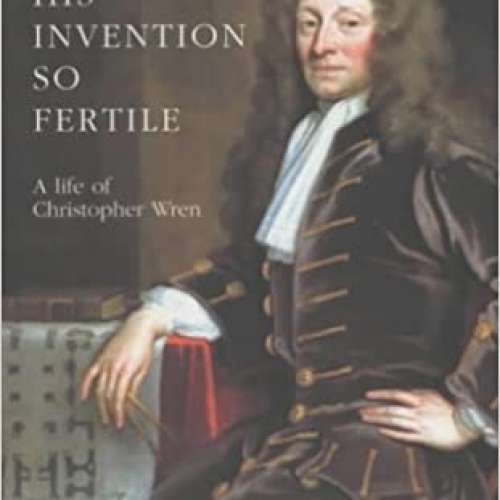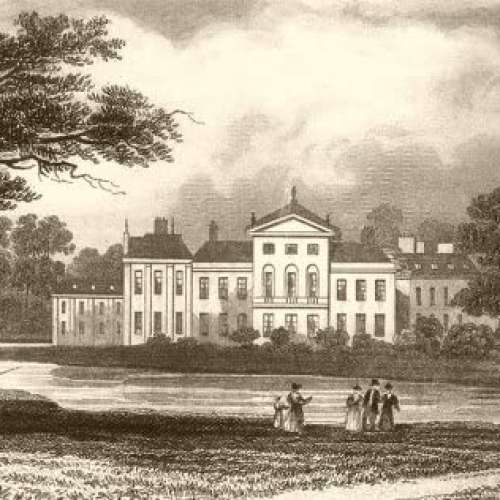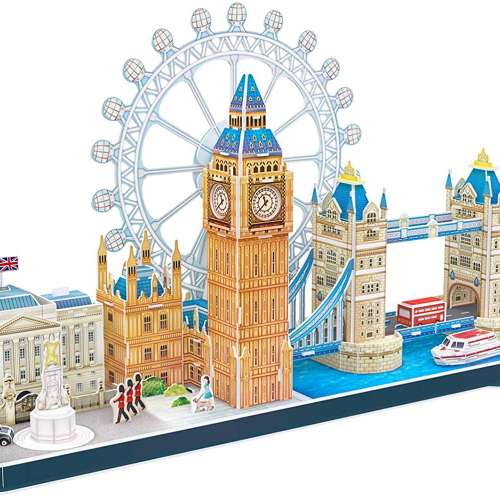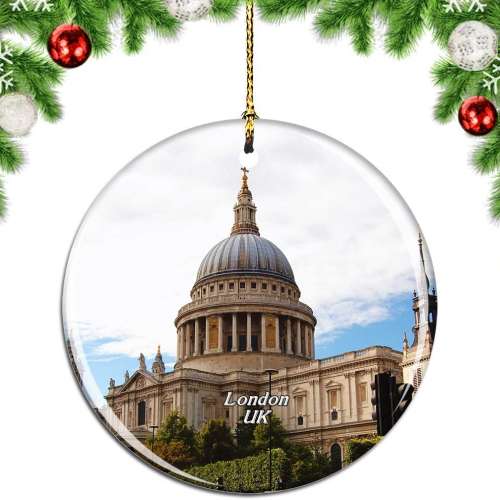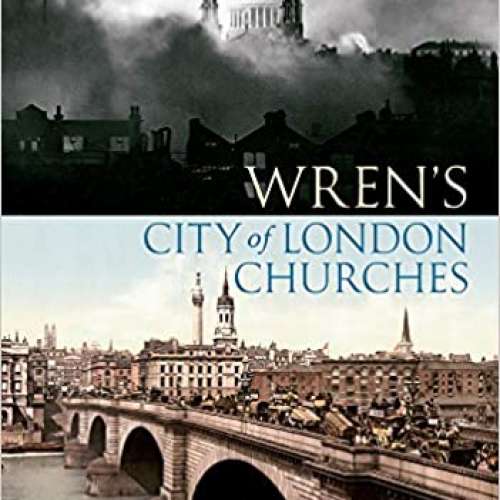

Christopher Wren (1632-1723)
The secret of architectural excellence is to translate the proportions of a dachshund into bricks, mortar and marble.
Sir Christopher Wren was one of the most highly acclaimed English architects in history, as well as an anatomist, astronomer, geometer, and mathematician-physicist. He was accorded responsibility for rebuilding 52 churches in the City of London after the Great Fire in 1666, including what is regarded as his masterpiece, St Paul's Cathedral, on Ludgate Hill, completed in 1710.
The principal creative responsibility for a number of the churches is now more commonly attributed to others in his office, especially Nicholas Hawksmoor. Other notable buildings by Wren include the Royal Hospital Chelsea, Royal Naval College, Greenwich, and the south front of Hampton Court Palace. The Wren Building, the main building at the College of William and Mary, Virginia, is attributed to Wren.
Educated in Latin and Aristotelian physics at the University of Oxford, Wren was a founder of the Royal Society president 1680–1682, and his scientific work was highly regarded by Isaac Newton and Blaise Pascal.
Life and works
Wren was born in East Knoyle in Wiltshire, the only surviving son of Christopher Wren the Elder 1589–1658 and Mary Cox, the only child of the Wiltshire squire Robert Cox from Fonthill Bishop. Christopher Sr. was at that time the rector of East Knoyle and later Dean of Windsor. It was while they were living at East Knoyle that all their children were born; Mary, Catherine and Susan were all born by 1628 but then several children were born who died within a few weeks of their birth. Their son Christopher was born in 1632 then, two years later, another daughter named Elizabeth was born. Mary must have died shortly after the birth of Elizabeth, although there does not appear to be any surviving record of the date. Through Mary Cox, however, the family became well off financially for, as the only heir, she had inherited her father's estate.
As a child Wren "seem'd consumptive." Although a sickly child, he would survive into robust old age. He was first taught at home by a private tutor and his father. After his father's royal appointment as Dean of Windsor in March 1635, his family spent part of each year there, but little is known about Wren's life at Windsor. He spent his first eight years at East Knoyle and was educated by the Rev. William Shepherd, a local clergyman.
Little is known of Wren's schooling thereafter, during dangerous times when his father's Royal associations would have required the family to keep a very low profile from the ruling Parliamentary authorities. It was a tough time in his life, but one which would go on to have a significant impact upon his later works. The story that he was at Westminster School between 1641 and 1646 is substantiated only by Parentalia, the biography compiled by his son, a fourth Christopher, which places him there "for some short time" before going up to Oxford in 1650; however, it is entirely consistent with headmaster Doctor Busby's well-documented practice of educating the sons of impoverished Royalists and Puritans alike, irrespective of current politics or his own position.
Some of Wren's youthful exercises preserved or recorded though few are datable showed that he received a thorough grounding in Latin and also learned to draw. According to Parentalia, he was "initiated" in the principles of mathematics by Dr William Holder, who married Wren's elder sister Susan or Susanna in 1643. His drawing was put to academic use in providing many of the anatomical drawings for the anatomy textbook of the brain, Cerebri Anatome 1664, published by Thomas Willis, which coined the term "neurology." During this time period, Wren manifested an interest in the design and construction of mechanical instruments. It was probably through Holder that Wren met Sir Charles Scarburgh whom Wren assisted in his anatomical studies.
On 25 June 1650, Wren entered Wadham College, Oxford, where he studied Latin and the works of Aristotle. It is anachronistic to imagine that he received scientific training in the modern sense. However, Wren became closely associated with John Wilkins, the Warden of Wadham. The Wilkins circle was a group whose activities led to the formation of the Royal Society, comprising a number of distinguished mathematicians, creative workers and experimental philosophers. This connection probably influenced Wren's studies of science and mathematics at Oxford. He graduated B.A. in 1651, and two years later received M.A.
1653–1664
Receiving his M.A. in 1653, Wren was elected a fellow of All Souls' College in the same year and began an active period of research and experiment in Oxford. His days as a fellow of All Souls ended when Wren was appointed Professor of Astronomy at Gresham College, London in 1657. He was provided with a set of rooms and a stipend and was required to give weekly lectures in both Latin and English to all who wished to attend; admission was free. Wren took up this new work with enthusiasm. He continued to meet the men with whom he had frequent discussions in Oxford. They attended his London lectures and in 1660, initiated formal weekly meetings. It was from these meetings that the Royal Society, England's premier scientific body, was to develop. He undoubtedly played a major role in the early life of what would become the Royal Society; his great breadth of expertise in so many different subjects helping in the exchange of ideas between the various scientists. In fact, the report on one of these meetings reads:
Memorandum November 28, 1660. These persons following according to the usual custom of most of them, met together at Gresham College to hear Mr Wren's lecture, viz. The Lord Brouncker, Mr Boyle, Mr Bruce, Sir Robert Moray, Sir Paule Neile, Dr Wilkins, Dr Goddard, Dr Petty, Mr Ball, Mr Rooke, Mr Wren, Mr Hill. And after the lecture was ended they did according to the usual manner, withdraw for mutual converse.
In 1662, they proposed a society "for the promotion of Physico-Mathematicall Experimental Learning." This body received its Royal Charter from Charles II and "The Royal Society of London for Improving Natural Knowledge" was formed. In addition to being a founder member of the Society, Wren was president of the Royal Society from 1680 to 1682.
In 1661, Wren was elected Savilian Professor of Astronomy at Oxford, and in 1669 he was appointed Surveyor of Works to Charles II. From 1661 until 1668 Wren's life was based in Oxford, although his attendance at meetings of the Royal Society meant that he had to make occasional trips to London.
The main sources for Wren's scientific achievements are the records of the Royal Society. His scientific works ranged from astronomy, optics, the problem of finding longitude at sea, cosmology, mechanics, microscopy, surveying, medicine and meteorology. He observed, measured, dissected, built models and employed, invented and improved a variety of instruments.
1665–1723
It was probably around this time that Wren was drawn into redesigning a battered St Paul's Cathedral. Making a trip to Paris in 1665, Wren studied the architecture, which had reached a climax of creativity, and perused the drawings of Bernini, the great Italian sculptor and architect, who himself was visiting Paris at the time. Returning from Paris, he made his first design for St Paul's. A week later, however, the Great Fire destroyed two-thirds of the city. Wren submitted his plans for rebuilding the city to King Charles II, although they were never adopted. With his appointment as King's Surveyor of Works in 1669, he had a presence in the general process of rebuilding the city, but was not directly involved with the rebuilding of houses or companies' halls. Wren was personally responsible for the rebuilding of 51 churches; however, it is not necessarily true to say that each of them represented his own fully developed design.
Wren was knighted 14 November 1673. This honour was bestowed on him after his resignation from the Savilian chair in Oxford, by which time he had already begun to make his mark as an architect, both in services to the Crown and in playing an important part in rebuilding London after the Great Fire.

Additionally, he was sufficiently active in public affairs to be returned as Member of Parliament on four occasions. Wren first stood for Parliament in a by-election in 1667 for the Cambridge University constituency, losing by six votes to Sir Charles Wheler. He was unsuccessful again in a by-election for the Oxford University constituency in 1674, losing to Thomas Thynne. On his third attempt Wren was successful and he sat for Plympton Erle during the Loyal Parliament of 1685 to 1687. Wren was returned for New Windsor on 11 January 1689 in the general election, but his election was declared void on 14 May 1689. He was elected again for New Windsor on 6 March 1690, but this election was declared void on 17 May 1690. Over a decade later he was elected unopposed for Weymouth and Melcombe Regis at the November 1701 general election. He retired at the general election the following year.
By 1669, Wren's career was well established and it may have been his appointment as Surveyor of the King's Works in early 1669 that persuaded him that he could finally afford to take a wife. In 1669, the 37-year-old Wren married his childhood neighbour, the 33-year-old Faith Coghill, daughter of Sir John Coghill of Bletchingdon. Little is known of Faith's life or demeanour, but a love letter from Wren survives, which reads, in part:
I have sent your Watch at last & envy the felicity of it, that it should be soe near your side & soe often enjoy your Eye. ... .but have a care for it, for I have put such a spell into it; that every Beating of the Balance will tell you 'tis the Pulse of my Heart, which labors as much to serve you and more trewly than the Watch; for the Watch I beleeve will sometimes lie, and sometimes be idle & unwilling ... but as for me you may be confident I shall never...
This brief marriage produced two children: Gilbert, born October 1672, who suffered from convulsions and died at about 18 months old, and Christopher, born February 1675. The younger Christopher was trained by his father to be an architect. It was this Christopher that supervised the topping out ceremony of St Paul's in 1710 and wrote the famous Parentalia, or, Memoirs of the family of the Wrens. Faith Wren died of smallpox on 3 September 1675. She was buried in the chancel of St Martin-in-the-Fields beside the infant Gilbert. A few days later Wren's mother-in-law, Lady Coghill, arrived to take the infant Christopher back with her to Oxfordshire to raise.
In 1677, 17 months after the death of his first wife, Wren remarried, this time to Jane Fitzwilliam, daughter of William FitzWilliam, 2nd Baron FitzWilliam
She was a mystery to Wren's friends and companions. Robert Hooke, who often saw Wren two or three times every week, had, as he recorded in his diary, never even heard of her, and was not to meet her till six weeks after the marriage. As with the first marriage, this too produced two children: a daughter Jane 1677–1702; and a son William, "Poor Billy" born June 1679, who was developmentally delayed.
Like the first, this second marriage was also brief. Jane Wren died of tuberculosis in September 1680. She was buried alongside Faith and Gilbert in the chancel of St Martin-in-the-Fields. Wren was never to marry again; he lived to be over 90 years old and of those years was married only nine.
Bletchingdon was the home of Wren's brother-in-law William Holder who was rector of the local church. Holder had been a Fellow of Pembroke College, Oxford. An intellectual of considerable ability, he is said to have been the figure who introduced Wren to arithmetic and geometry.
Wren's later life was not without criticisms and attacks on his competence and his taste. In 1712, the Letter Concerning Design of Anthony Ashley Cooper, third Earl of Shaftesbury, circulated in manuscript. Proposing a new British style of architecture, Shaftesbury censured Wren's cathedral, his taste and his long-standing control of royal works. Although Wren was appointed to the Fifty New Churches Commission in 1711, he was left only with nominal charge of a board of works when the surveyorship started in 1715. On 26 April 1718, on the pretext of failing powers, he was dismissed in favour of William Benson.
In 1713, he bought the manor of Wroxall, Warwickshire from the Burgoyne family, to which his son Christopher retired in 1716 after losing his post as Clerk of Works. Several of Wren's descendants would be buried there in the Church of St Leonard.
Death
The Wren family estate was at The Old Court House in the area of Hampton Court. He had been given a lease on the property by Queen Anne in lieu of salary arrears for building St Paul's. For convenience Wren also leased a house on St James's Street in London. According to a 19th-century legend, he would often go to London to pay unofficial visits to St Paul's, to check on the progress of "my greatest work". On one of these trips to London, at the age of ninety, he caught a chill which worsened over the next few days. On 25 February 1723 a servant who tried to awaken Wren from his nap found that he had died.

Wren was laid to rest on 5 March 1723. His remains were placed in the south-east corner of the crypt of St Paul's beside those of his daughter Jane, his sister Susan Holder, and her husband William. The plain stone plaque was written by Wren's eldest son and heir, Christopher Wren, Jr. The inscription, which is also inscribed in a circle of black marble on the main floor beneath the centre of the dome, reads:
which translates from Latin as:
Here in its foundations lies the architect of this church and city, Christopher Wren, who lived beyond ninety years, not for his own profit but for the public good. Reader, if you seek his monument – look around you. Died 25 Feb. 1723, age 91.
His obituary was published in the Post Boy No. 5244 London 2 March 1723:
Sir Christopher Wren who died on Monday last in the 91st year of his age, was the only son of Dr. Chr. Wren, Dean of Windsor & Wolverhampton, Registar of the Garter, younger brother of Dr. Mathew (sic) Wren Ld Bp of Ely, a branch of the ancient family of Wrens of Binchester in the Bishoprick (sic) of Durham
1653. Elected from Wadham into fellowship of All Souls
1657. Professor of Astronomy Gresham College London
1660. Savilian Professor. Oxford
After 1666. Surveyor General for Rebuilding the Cathedral Church of St.Paul and the Parochial Churches & all other Public Buildings which he lived to finish
1669. Surveyor General till April 26. 1718
1680. President of the Royal Society
1698. Surveyor General & Sub Commissioner for Repairs to Westminster Abbey by Act of Parliament, continued till death.
His body is to be deposited in the Great Vault under the Dome of the Cathedral of St. Paul.
"The Curious and Entire Libraries of Sir Christopher Wren", and of his son, were auctioned by Langford and Cock at Mr Cock's in Covent Garden on 24–27 October 1748.
Scientific career
One of Wren's friends, another great scientist and architect and a fellow Westminster Schoolboy, Robert Hooke said of him "Since the time of Archimedes there scarce ever met in one man in so great perfection such a mechanical hand and so philosophical mind."
When a fellow of All Souls, Wren constructed a transparent beehive for scientific observation; he began observing the moon, which was to lead to the invention of micrometers for the telescope. According to Parentalia pp. 210–211, his solid model of the moon attracted the attention of the King who commanded Wren to perfect it and present it to him.
He contrived an artificial Eye, truly and dioptrically made (as large as a Tennis-Ball) representing the Picture as Nature makes it: The Cornea, and Crystalline were Glass, the other Humours, Water.
He experimented on terrestrial magnetism and had taken part in medical experiments while at Wadham College, performing the first successful injection of a substance into the bloodstream of a dog. In Gresham College, he did experiments involving determining longitude through magnetic variation and through lunar observation to help with navigation, and helped construct a 35-foot 11 m telescope with Sir Paul Neile. Wren also studied and improved the microscope and telescope at this time. He had also been making observations of the planet Saturn from around 1652 with the aim of explaining its appearance. His hypothesis was written up in De corpore saturni but before the work was published, Huygens presented his theory of the rings of Saturn. Immediately Wren recognised this as a better hypothesis than his own and De corpore saturni was never published. In addition, he constructed an exquisitely detailed lunar model and presented it to the king. In 1658, he found the length of an arc of the cycloid using an exhaustion proof based on dissections to reduce the problem to summing segments of chords of a circle which are in geometric progression.
A year into Wren's appointment as a Savilian Professor in Oxford, the Royal Society was created and Wren became an active member. As Savilian Professor, Wren studied mechanics thoroughly, especially elastic collisions and pendulum motions. He also directed his far-ranging intelligence to the study of meteorology: in 1662, he invented the tipping bucket rain gauge and, in 1663, designed a "weather-clock" that would record temperature, humidity, rainfall and barometric pressure. A working weather clock based on Wren's design was completed by Robert Hooke in 1679.
In addition, Wren experimented on muscle functionality, hypothesizing that the swelling and shrinking of muscles might proceed from a fermentative motion arising from the mixture of two heterogeneous fluids. Although this is incorrect, it was at least founded upon observation and may mark a new outlook on medicine: specialisation.
Another topic to which Wren contributed was optics. He published a description of an engine to create perspective drawings and he discussed the grinding of conical lenses and mirrors. Out of this work came another of Wren's important mathematical results, namely that the hyperboloid of revolution is a ruled surface. These results were published in 1669. In subsequent years, Wren continued with his work with the Royal Society, although after the 1680s his scientific interests seem to have waned: no doubt his architectural and official duties absorbed more time.
It was a problem posed by Wren that serves as an ultimate source to the conception of Newton's Principia Mathematica Philosophiae Naturalis. Robert Hooke had theorised that planets, moving in vacuo, describe orbits around the Sun because of a rectilinear inertial motion by the tangent and an accelerated motion towards the Sun. Wren's challenge to Halley and Hooke, for the reward of a book worth thirty shillings, was to provide, within the context of Hooke's hypothesis, a mathematical theory linking Kepler's laws with a specific force law. Halley took the problem to Newton for advice, prompting the latter to write a nine-page answer, De motu corporum in gyrum, which was later to be expanded into the Principia.
Mentioned above are only a few of Wren's scientific works. He also studied other areas, ranging from agriculture, ballistics, water and freezing, light and refraction, to name only a few. Thomas Birch's History of the Royal Society 1756–57 is one of the most important sources of our knowledge not only of the origins of the Society, but also the day-to-day running of the Society. It is in these records that most of Wren's known scientific works are recorded.
Architectural career
In Wren's age, the profession of architect as understood today did not exist. Since the early years of the 17th century it was not unusual for well-educated young men virtuosi to take up architecture as a gentlemanly activity, a pursuit widely accepted as a branch of applied mathematics. This is implicit in the writings of Vitruvius and explicit in such 16th century authors as John Dee and Leonard Digges. When Wren was a student at Oxford, he became familiar with Vitruvius' De architectura and absorbed intuitively the fundamentals of architectural design. In 1668, building work began on Wren’s designs for Emmanuel College Chapel in Cambridge and the Garden Quadrangle in Trinity College in Oxford. In English Medieval tradition, buildings had been constructed to the needs of the patron and the suggestions of building professionals, such as master carpenters or master bricklayers.
Through the Royal Society and his use of optics, the King noticed Wren's works. In 1661 he was approached by his cousin Matthew with a royal commission, as "one of the best Geometers in Europe", to direct the re-fortification of Tangier. Wren excused himself on grounds of health. Although this invitation may have arisen from Charles II's casual opportunism in matching people to tasks, Wren is believed to have been already on the way to practice as an architect. Before the end of 1661 Wren was unofficially advising on the repair of Old St Paul's Cathedral after two decades of its neglect and distress; his architectural interests were also evident to his associates at the time. Two years later, he set out on his only foreign journey, to Paris and the Île-de-France, during which he undertook the first-hand study of modern design and construction.
By this time, Wren had mastered and thoroughly understood the principles of architecture. Unlike several of his colleagues, who regarded it as a set of rules and formulas for design, he had acquired, understood, and exploited the necessary combination of reason and intuition, experience and imagination.
Wren's first architectural project was the chapel of Pembroke College in Cambridge, which his uncle Matthew Wren, the Bishop of Ely, asked him to design in 1663. The second was the design of the Sheldonian Theatre in Oxford, completed in 1668. This, the gift of Archbishop Sheldon to his old university, was influenced by the form of the ancient Theatre of Marcellus in Rome, thus achieving a combination of classical and modern empirical design.
St Paul's Cathedral
St Paul's has always been the highlight of Wren's reputation. His association with it spans his whole architectural career, including the 36 years between the start of the new building and the declaration by parliament of its completion in 1711.
Wren had been involved in repairs of the old cathedral since 1661. In the spring of 1666, he made his first design for a dome for St Paul's. It was accepted in principle on 27 August 1666. One week later, however, the Great Fire of London reduced two-thirds of the City to a smoking desert and old St Paul's to a ruin. Wren was most likely at Oxford at the time, but the news, so fantastically relevant to his future, drew him at once to London. Between 5 and 11 September he ascertained the precise area of devastation, worked out a plan for rebuilding the City and submitted it to Charles II. Others also submitted plans. However, no new plan proceeded any further than the paper on which it was drawn. A Rebuilding of London Act which provided rebuilding of some essential buildings was passed in 1666. In 1669, the King's Surveyor of Works died and Wren was promptly installed.

It was not until 1670 that the pace of rebuilding started accelerating. A second rebuilding act was passed that year, raising the tax on coal and thus providing a source of funds for rebuilding of churches destroyed within the City of London. Wren presented his initial "First Model" for St Paul's. This plan was accepted, and demolition of the old cathedral began. By 1672, however, this design seemed too modest, and Wren met his critics by producing a design of spectacular grandeur. This modified design, called "Great Model", was accepted by the King and the construction started in November 1673. However, this design failed to satisfy the chapter and clerical opinion generally; moreover, it had an economic drawback. Wren was confined to a "cathedral form" desired by the clergy. In 1674 he produced the rather meagre Classical-Gothic compromise known as the Warrant Design. However, this design, called so from the royal warrant of 14 May 1675 attached to the drawings, is not the design upon which work had begun a few weeks before.
The cathedral that Wren started to build bears only a slight resemblance to the Warrant Design. In 1697, the first service was held in the cathedral when Wren was 65. There was still, however, no dome. Finally in 1711 the cathedral was declared complete, and Wren was paid the half of his salary that, in the hope of accelerating progress, Parliament had withheld for 14 years since 1697. The cathedral had been built for 36 years under his direction, and the only disappointment he had about his masterpiece was the dome: against his wishes the commission engaged Thornhill to paint the inner dome in false perspective and finally authorised a balustrade around the roof line. This diluted the hard edge Wren had intended for his cathedral, and elicited the apt parthian comment that "ladies think nothing well without an edging".
Major architectural works in the 1670s and 1680s
During the 1670s Wren received significant secular commissions which manifest both the maturity and the variety of his architecture and the sensitivity of his response to diverse briefs.
Among many of his remarkable designs at this time, the monument 1671–76 commemorating the Great Fire also involved Robert Hooke, but Wren was in control of the final design, the Royal Observatory 1675–76, and the Wren Library at Trinity College, Cambridge 1676–84 were the most important ones.
In 1682, Wren advised that the original statues of the King's Beasts on St George's Chapel, Windsor be removed. The pinnacles were left bare until 1925, when replica statues were installed.

By historical accident, all Wren's large-scale secular commissions dated from after the 1680s. At the age of 50 his personal development, as was that of English architecture, was ready for a monumental but humane architecture, in which the scales of individual parts relates both to the whole and to the people who used them. The first large project Wren designed, the Chelsea Hospital 1682–92, does not entirely satisfy the eye in this respect, but met its brief with distinction and such success that even in the 21st century it fulfills its original function. The reconstruction of the state room at Windsor Castle was notable for the integration of architecture, sculpture and painting. This commission was in the hand of Hugh May, who died in February 1684, before the construction finished; Wren assumed his post and finalised the works.
Between 1683 and 1685 he was much occupied in designing the King's House, Winchester, where Charles II had hoped to spend his declining years, but which was never completed. When Wren promised that it would be complete within a year the King, who was conscious of his mortality, replied that " a year is a great time in my life".
After the death of Charles II in 1685, Wren's attention was directed mainly to Whitehall 1685–87. The new king, James II, required a new chapel and also ordered a new gallery, council chamber and a riverside apartment for the Queen. Later, when James II was removed from the throne, Wren took on architectural projects such as Kensington Palace 1689–96 and Hampton Court 1689–1700.
The erection of the present Windsor Guildhall was begun in 1687, under the direction of Sir Thomas Fitz or Fiddes but there is a story that on his death in 1689, the task was taken over by Sir Christopher Wren. It was completed at a cost of £2687 – 1s – 6d. The new building was supported around its perimeter by stone columns, providing a covered area beneath as a venue for corn markets.

The story is widely told that the borough Council demanded that Wren should insert additional columns within the covered area, in order to support the weight of the heavy building above; Wren, however, was adamant that these were not necessary. Eventually the council insisted and, in due course, the extra supporting columns were built, but Wren made them slightly short, so that they do not quite touch the ceiling, hence proving his claim that they were not necessary. However, there is little evidence that Wren was ever involved in the design or construction of the Guildhall. It is now believed that the story grew out of Wren's connections with Windsor and that his son, also called Christopher Wren, who served as a Member of Parliament for Windsor, commissioned the statue of Prince George of Denmark in 1713 on the south end of the building and his name was engraved underneath. The pillars were probably moved into the cornmarket from the east side of the building when an extension was added in 1829. The gaps at the top of the pillars are now filled with tiles smaller than the capitals.
Wren did not pursue his work on architectural design as actively as he had before the 1690s, although he still played important roles in a number of royal commissions. In 1696 he was appointed Surveyor of Greenwich Naval Hospital, and in 1698 he was appointed Surveyor of Westminster Abbey. He resigned the former role in 1716 but held the latter until his death, approving with a wavering signature Burlington's revisions of Wren's own earlier designs for the great Archway of Westminster School.
Achievement and legacy
At his death, Wren was 90. Even the men he had trained and who owed much of their success to Wren's original and leadership were no longer young. Newer generations of architects were beginning to look past Wren's style. The Baroque school his apprentices had created was already under fire from a new generation that brushed Wren's reputation aside and looked back beyond him to Inigo Jones. Architects of the 18th century could not forget Wren, but they could not forgive some elements in his work they deemed unconventional. The churches left the strongest mark on subsequent architecture. In France, where English architecture rarely made much impression, the influence of St Paul's Cathedral can be seen in the church of Sainte-Geneviève now the Panthéon; begun in 1757, it rises to a drum and dome similar to St Paul's, and there are other versions inspired by Wren's dome, from St Isaac's 1840–42 in Saint Petersburg to the US Capitol at Washington, D.C. 1855–65.

In the 20th century, the potency of the influence of Wren's work on English architecture was reduced. The last major architect who admitted to being dependent on him was Sir Edwin Lutyens, who died in 1944. With the purposeful elimination of historic influences from international architecture in the early 20th century, Wren's work gradually stopped being perceived as a mine of examples applicable to contemporary design.
Freemasonry
Since at least the 18th century, the Lodge of Antiquity No. 2, one of the four founding Masonic Lodges of the Premier Grand Lodge of England in 1717, has claimed Christopher Wren to have been its Master at the Goose and Gridiron at St. Paul's churchyard. Whilst he was rebuilding the cathedral he is said to have been "adopted" on 18 May 1691 that is, accepted as a sort of honorary member or patron, rather than an operative. Their 18th-century maul with its 1827 inscription claiming that it was used by Wren for the foundation stone of St. Paul's, belonging to the Lodge and on display in the Library and Museum of Freemasonry in London, corroborates the story. James Anderson made the claims in his widely circulated Constitutions while many of Wren's friends were still alive, but he made many highly creative claims as to the history or legends of Freemasonry. There is also a clear possibility of confusion between the operative workmen's lodges which might naturally have welcomed the boss, and the "speculative" or gentlemen's lodges which became highly fashionable just after Wren's death. By the standards of his time a gentleman like Wren would not generally join an artisan body; however the workmen of St Paul's cathedral would naturally have sought the patronage or "interest" of their employer, and within Wren's lifetime there was a predominantly gentlemen's Lodge at the Rummer and Grapes, a mile upriver at Westminster where Wren had been to School.

In 1788, the Lodge of Antiquity thought they were buying a portrait of Wren which now dominates Lodge Room 10, in the same building as the Museum; but it is now identified with William Talman, not Wren. Nevertheless, this recorded event and many old records attest the fact that Antiquity thought that Wren had been its Master, at a time when it still held its minute books for the relevant years which were lost by Preston at some date after 1778.
The evidence whether Wren was a speculative freemason is the subject of the Prestonian Lecture of 2011, which concludes on the evidence of two obituaries and Aubrey's memoirs, with supporting materials, that he did indeed attend the closed meeting in 1691, probably of the Lodge of Antiquity, but that there is nothing to suggest that he was ever a Grand Officer as claimed by Anderson.
Trivia
At one time Wren was credited with the design of the King's House at Newmarket, Suffolk. The attribution gave rise to an apocryphal story in which Charles II, who was over six feet tall, complained about the low ceilings. Wren, who was not so tall, replied that "They were high enough!", at which the king crouched down until he was on a level with his Surveyor and strutted about saying, "Ay, Ay, Sir Christopher, I think they are high enough."
Christopher Wren appeared on the reverse of the first British £50 banknote Series D issued in modern timeS. The notes were printed between 1981 and 1994 and were in circulation until 1996.
Bibliography
- Wren, Christopher; Ames, Joseph; Wren, Stephen 1750. Parentalia, or, Memoirs of the family of the Wrens.
More facts
His Invention So Fertile: A Life of Christopher Wren by Adrian Tinniswood
On a Grander Scale: The Outstanding Career of Sir Christopher Wren
Christopher Wren: In Search of Eastern Antiquity
Christopher Wren Builds a Cathedral (2015)
Wren of St. Paul's (1938)


